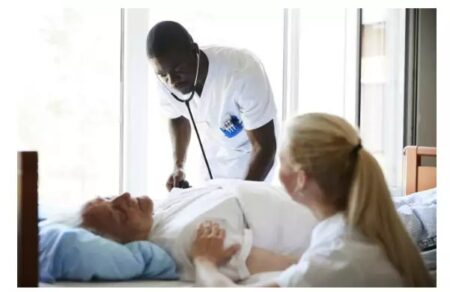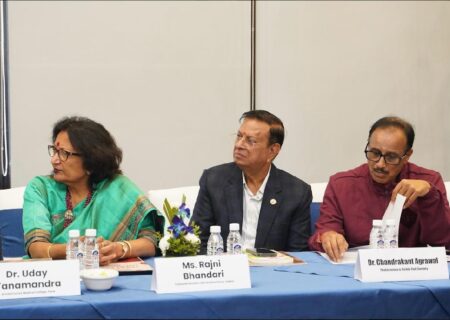First Case of Early-Stage Avascular Necrosis Successfully Reversed by Oral Rivaroxaban
This is done first time in the world at Moolchand Medcity, New Delhi under the supervision of Dr H K Chopra & Dr Sundeep Malla First case of Early-Stage Avascular Necrosis was successfully reversed by Oral
This is done first time in the world at Moolchand Medcity, New Delhi under the supervision of Dr H K Chopra & Dr Sundeep Malla
First case of Early-Stage Avascular Necrosis was successfully reversed by Oral Rivaroxaban of a 56-year-old female, known case of hypertension, Type-2 diabetes mellitus, dyslipidemia and obesity presented with pain in the left hip joint and groin off and on of one month duration both at rest and aggravated by walking.
There was associated limping as well. On examination, there was restricted movement and range of motion in the left hip joint with no history of fever or trauma. The ESR, CRP and anti CCP antibodies were normal.
Avascular Necrosis (AVN) is a disease entity associated with numerous factors causing direct damage to the vasculature of the bone, direct injury to the bone or bone marrow which ultimately leads to mechanical failure of the bone. Various pharmacologic agents have been tried to prevent the progression of osteonecrosis without successful documentation by imaging.
Anticoagulants such as enoxaparin had been used in the past to prevent the progression of osteonecrosis. In our case, we successfully treated a patient of early AVN of the hip joint using with Rivaroxaban with total revascularization of the jeopardized head of the femur bone by a newer oral anticoagulant (NOAC) and validated by serial MRI Scans.
In the patient, no other significant abnormality was seen on laboratory examination. A radiograph of bilateral hip joints was normal with no obvious abnormality. An MRI pelvis was done. MRI showed STIR hyperintensity and subchondral edema in the superior aspect of the left femoral head which was mildly hypointense on T-1 weighted images suggestive of avascular necrosis of the left hip joint, imaging (Stage II Arlet and Fiat). The patient was managed conservatively with oral blood thinner (anticoagulant) Rivaroxaban 10 mg daily with other symptomatic treatment.
After treatment for one month, she had a significant decrease in symptoms and started to walk without assistance. A repeat MRI pelvis after 3 months of treatment surprisingly showed no abnormality in the hip joint at all suggesting thereby complete recovery Another MRI was done after 6 months which showed sustained recovery indicating remarkable successful reperfusion of jeopardized head of the femur with complete recovery from AVN which is a revolution.
Avascular Necrosis is due to interruption of blood supply to the proximal femur bone, with direct injury to the bone or bone marrow due to lack of blood supply leading to mechanical failure of the bone.
It can occur due to various causes, either traumatic or non-traumatic in origin. These causes include fractures, dislocation, chronic steroid use, chronic alcohol use, coagulopathy, especially covid inflicted coagulopathy in today’s covid time. Other Risk factors include uncontrolled diabetes, hematological malignancies, Gaucher’s disease, sickle cell disease etc.
The treatment of nontraumatic osteonecrosis remains one of the most challenging subjects in the orthopaedics. Various pharmacologic agents have been tried to help prevent the progression of osteonecrosis and, was an unsuccessful attempt to reverse the disease and to promote the growth of viable bone in the necrotic lesion.
Various agents including bisphosphonates, statins, antiplatelate such as aspirin, enoxaparin, and vasodilators etc. have been used without any success. Limited data from a meta-analysis including four observational studies suggested that while anticoagulants helped prevent progression of primary osteonecrosis of the femoral head in patients without collapse, anticoagulants did not appear to prevent progression of osteonecrosis for patients with secondary osteonecrosis. Another prospective study evaluated the effectiveness of enoxaparin in 35 patients with early stages of osteonecrosis with a thrombophilic disorder compared with historical controls. After a mean follow-up of two years, progression of disease was observed in 20 per cent of those receiving enoxaparin versus 80 percent of historical controls. Our patient is the first case reported in the world with a successful complete reperfusion of AVN in early stages.
The message is AVN if diagnosed in early stages, then timely intervention with oral Rivaraxaban may salvage the jeopardized femur head by enhancing the circulation as validated by MRI.
|
|






